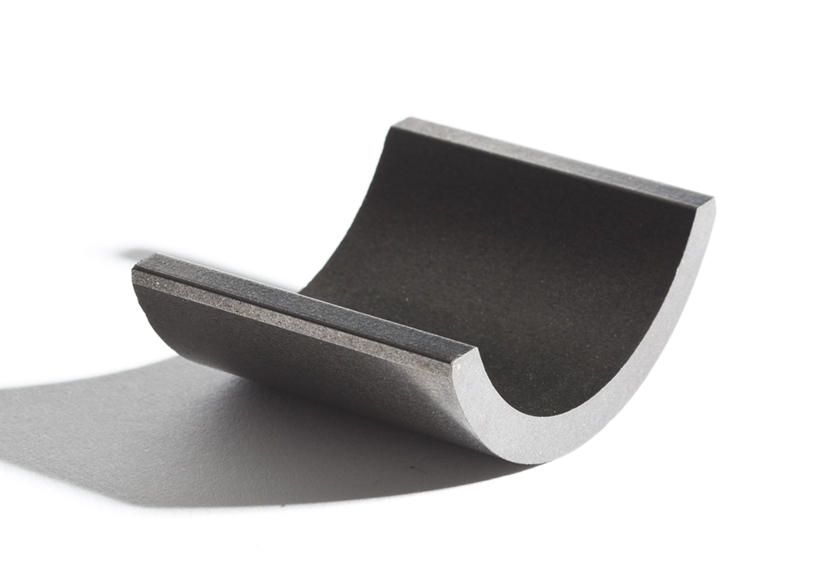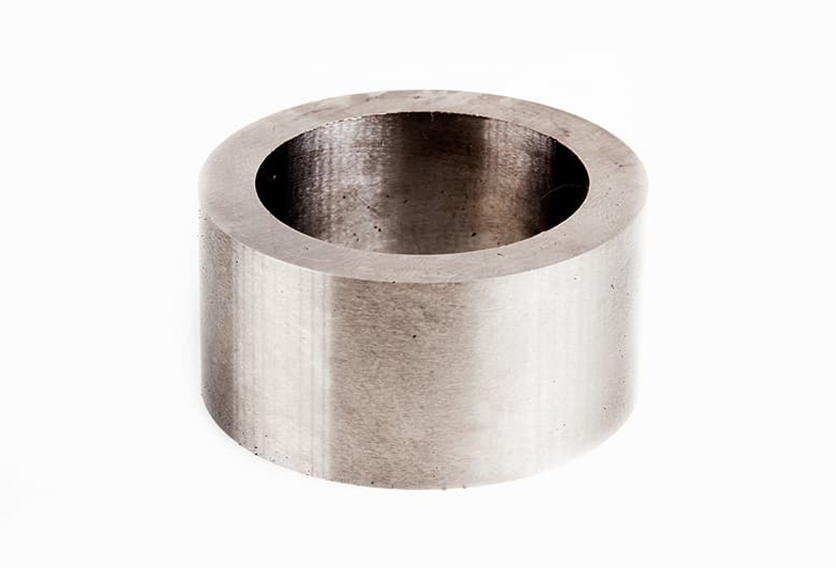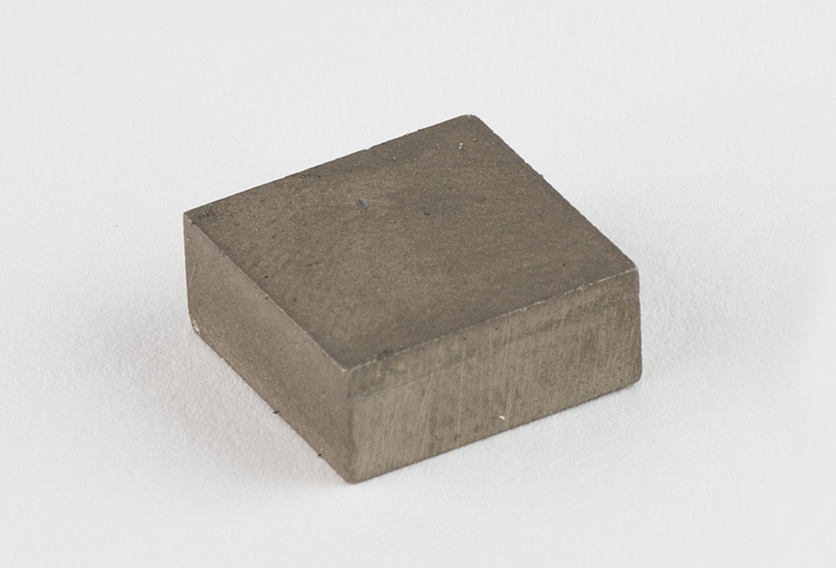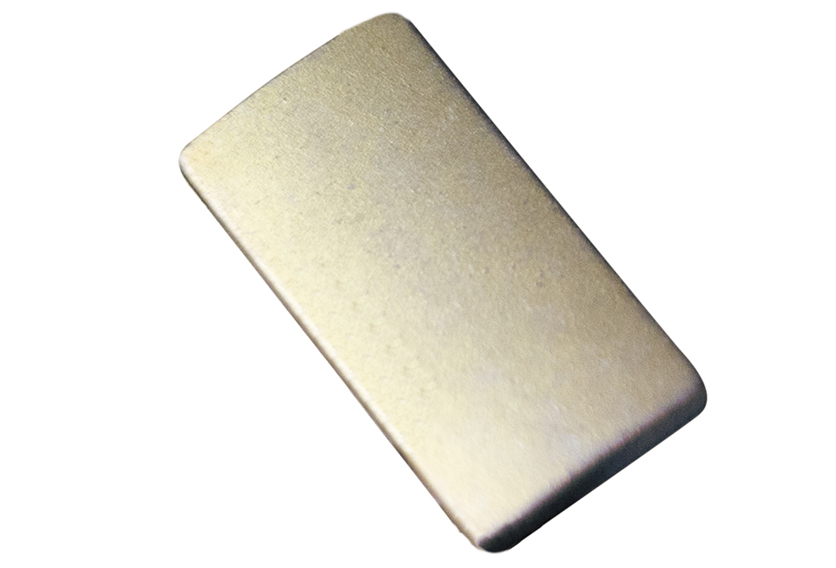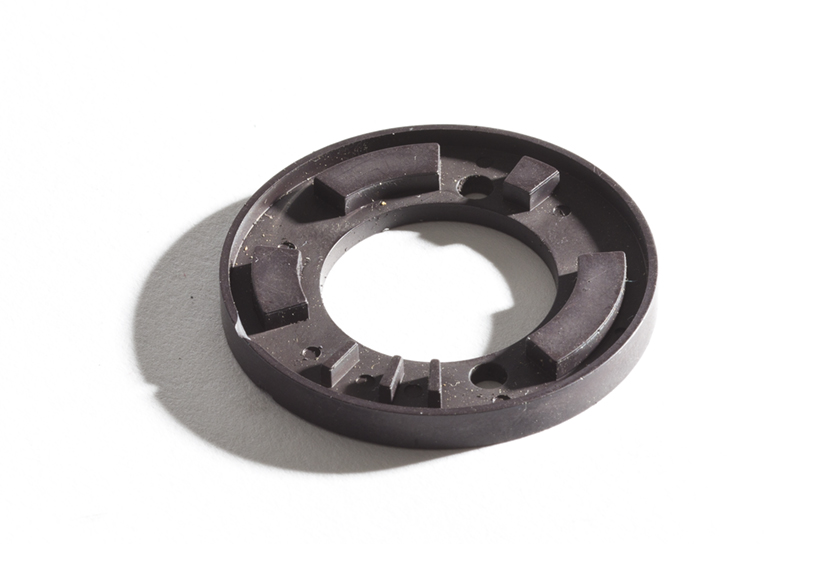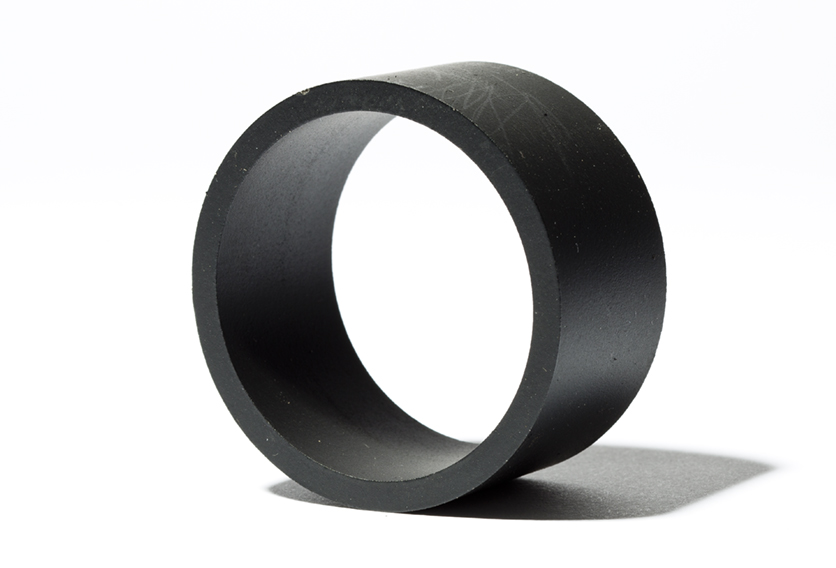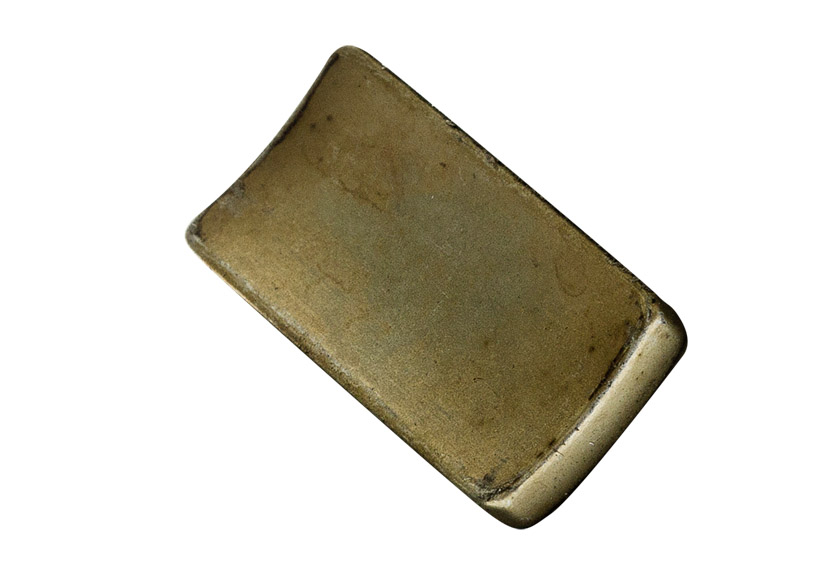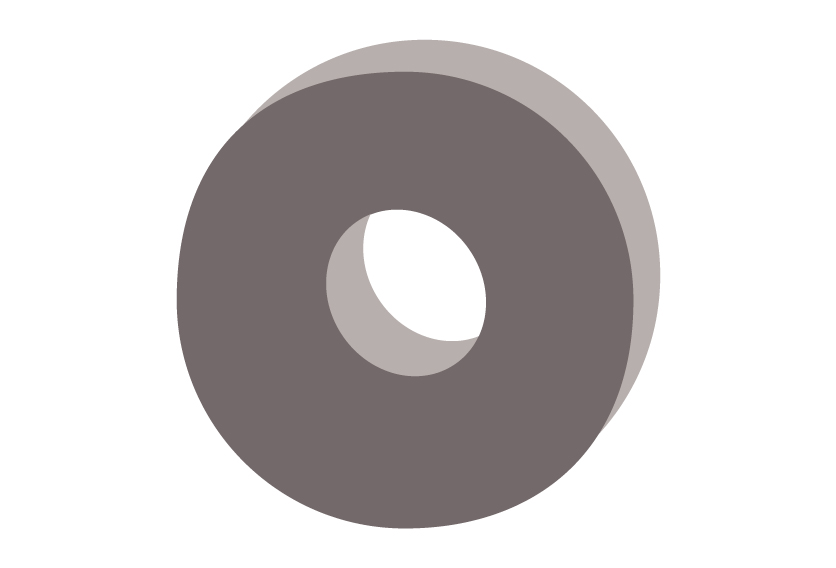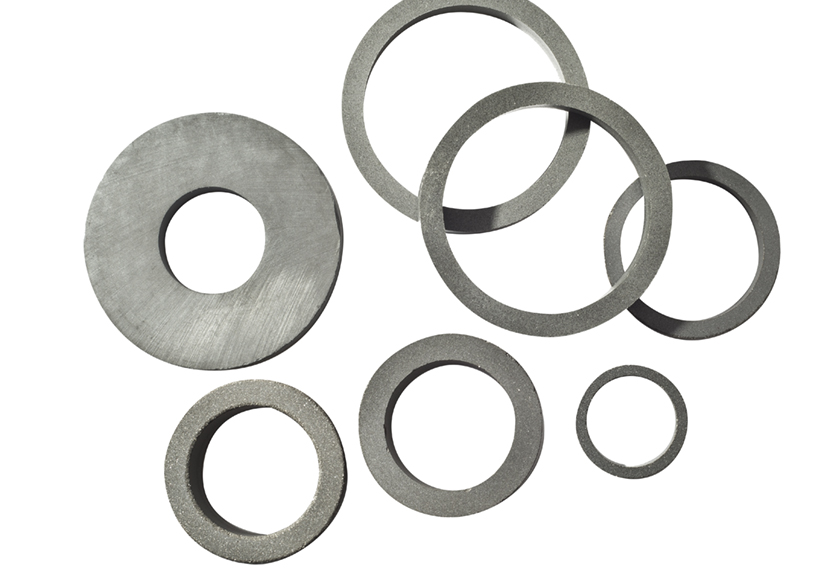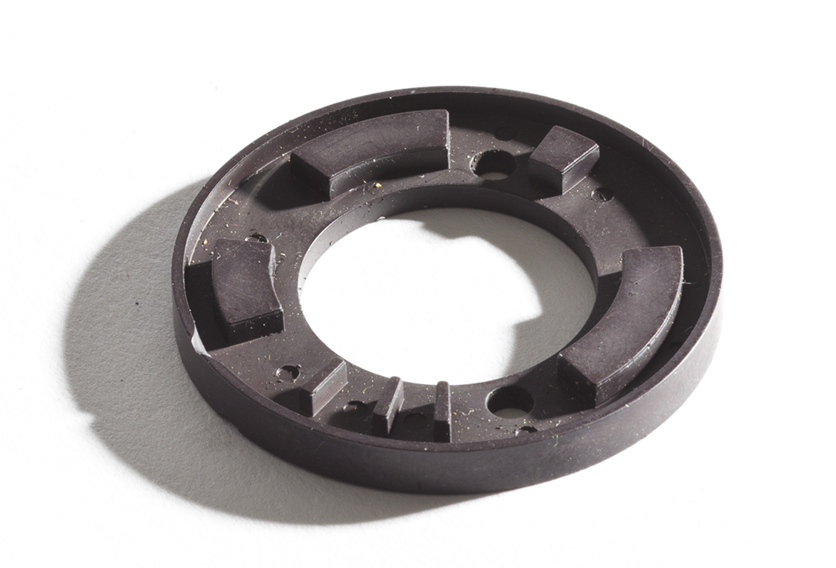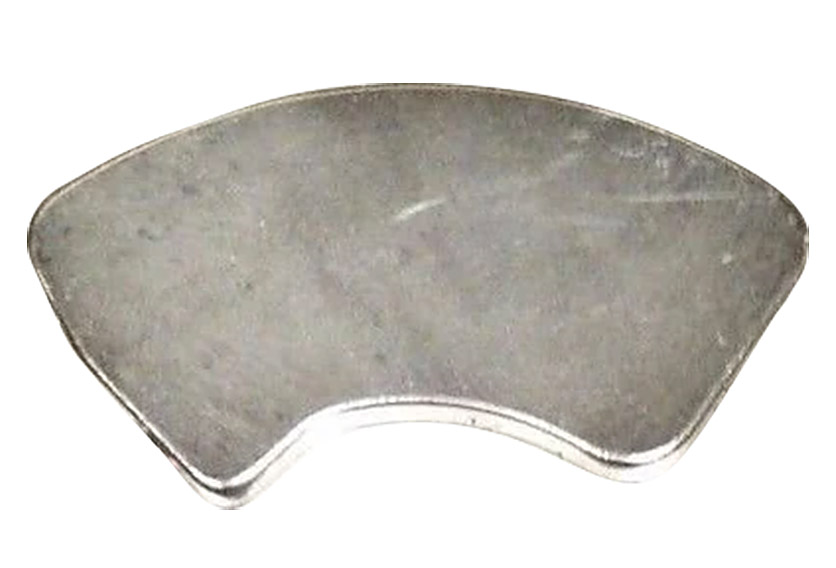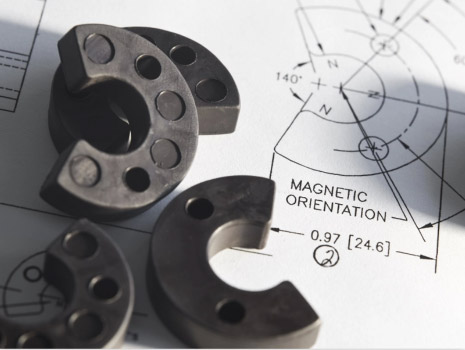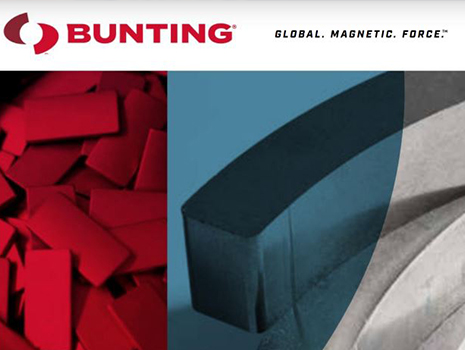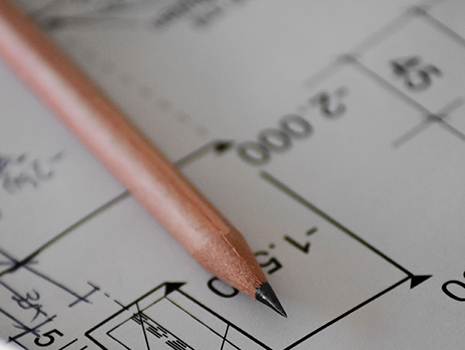
Compression Molded Magnets
Compression molded magnets are generally used in applications that do not require as much mechanical strength.
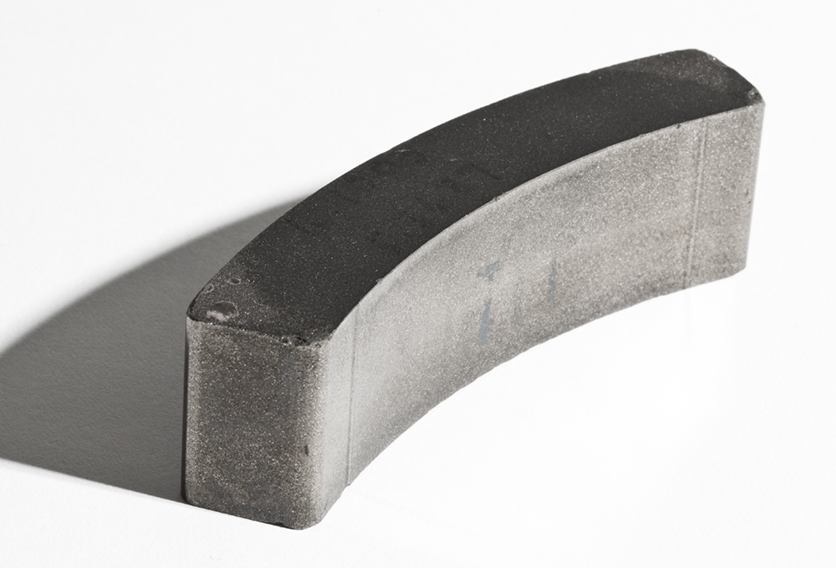
- Made of NdFeB powder and thermosetting epoxy resin binder
- Higher magnetic strength that injection molded magnets
- Suitable for applications requiring lower mechanical strength
- Limited to common shapes and sizes like rectangles, rings, arcs, and cylinders
Custom Compression Molded Magnets
Compression molded magnets are often produced in very high quantities. Compression molded magnets are more cost-effective than injection molded magnets, but are limited to simple shapes like rings, cylinders, and rectangles. Compression molded magnets are made of isotropic neodymium iron boron material and powdered samarium cobalt magnets.
Processes, Performance & Shaping
Based on techniques used in ceramics, powder metal and pharmaceuticals, Compression Molded requires the lowest level of non-magnetic binder, thus producing the highest magnetic performance in bonded magnets. The use of compression bonded is almost exclusively restricted to rare earth alloy products such as Neodymium Iron Boron (NdFeB).
The shaping limitations of compression molding are found in the need to eject a part of the tool. The most common shapes are 2-D rings, but compression molded is also available in disks, blocks and segments. The binders used in compression molding are typically epoxy resins, which have good dimensional stability and resistance to chemicals. Some are able to withstand temperatures in excess of 250°C.
The maximum energy product achievable is typically 12 MGOe for Isotropic product, while anisotropic (aligned with a field during molding) grades of samarium high cobalt give even higher performance and enhanced temperature stability.

